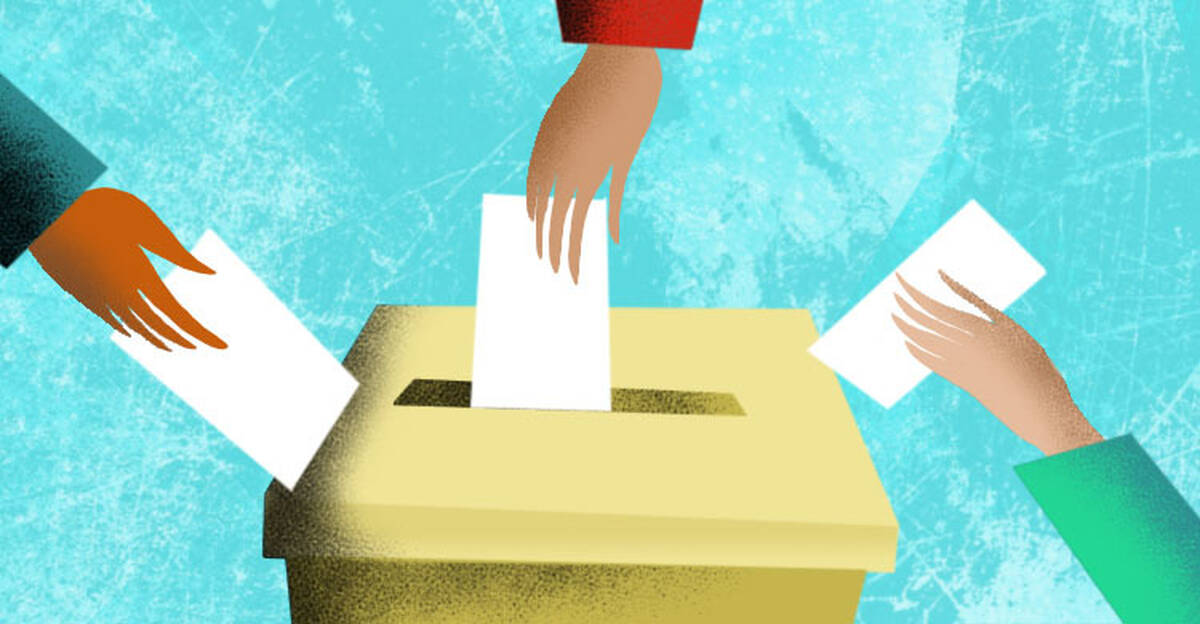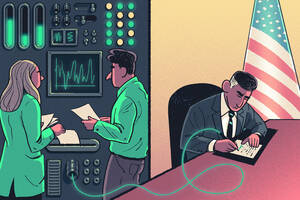In time for Election Day, we’ve gathered together some of our faculty’s election-related research.
Many candidates for political office loudly tout their celebrity endorsements. But how much does the support of Beyoncé or Scott Baio or Willie Nelson really matter at the ballot box?
To find out, Craig Garthwaite, an associate professor of strategy, and a colleague examined the impact of one of the world’s most well-known and well-loved celebrities: Oprah Winfrey. In the 2008 Democratic presidential primary, Oprah endorsed Barack Obama in his race against Hillary Clinton.
To measure what impact this had on voters, the researchers calculated the number of subscribers to O, the Oprah Magazine who lived in each U.S. county. They then compared the number of subscribers in a given area to Obama’s success in that same area. After controlling for a wide range of socioeconomic and demographic factors, they found that Obama did better in areas with more O subscribers.
The researchers’ next step was to make sure they were not simply seeing an underlying preference for Obama that was correlated with a preference for Oprah. So they ran the comparison again, but this time compared O subscribers’ locations with the results of Obama’s earlier race, the 2004 primary in Illinois for the U.S. Senate. This time, they found no relation between Oprah’s popularity and votes for Obama.
“That suggests that there’s really not some underlying preference that’s driving this, but it’s the endorsement’s effect,” Garthwaite says.
Overall, they calculated that Oprah’s endorsement was worth about 1 million votes for Obama in 2008.
It’s unclear, of course, whether other celebrities would have had the same effect.
“The question we really have to ask is whether the fact that Oprah is such a powerful celebrity means that the magnitude of her endorsement is greater than others’,” Garthwaite says, “or if it means that only her endorsement, and no one else’s, would have an effect.
Candidates on the stump often choose between two kinds of messages: abstract ideas about core values and ideals or concrete statements about policy plans. So which type is more effective?
It depends on how far away the election is, according to research from marketing professor Angela Y. Lee. In a series of experiments about a fictional candidate, she and colleagues found that abstract notions resonated with voters early in the campaign, but concrete messages became more meaningful as Election Day approached.
In one experiment, 92 undergraduates were shown statements from a fictional candidate for the U.S. Senate. One statement was abstract and focused on ideals and values; the other was concrete and focused on the importance of being “action oriented.” Each statement came in two versions: one saying the campaign would begin in one week and the other saying the campaign would start in six months. After reading the statements, subjects were asked to rate their attitudes toward the candidate and their assessment of the candidate’s statement.
The results showed that abstract messages were more persuasive when participants believed the campaign was six months away, while concrete, action-oriented messages were more convincing when participants thought the campaign was at hand.
The results could help political candidates make better use of the increasingly huge sums they spend to reach voters.
Candidates try mightily to manage their endorsements and campaign messages. But one important factor is entirely out of their control: where their name sits on the ballot.
That positioning—in particular, whether a candidate’s name is listed first—matters quite a bit, according to research from Yuval Salant, an associate professor of managerial economics and decision sciences, and a colleague.
The researchers turned to California for their study because of its unique method of assigning ballot positions. Instead of listing names alphabetically, the California Secretary of State draws a random order of the alphabet, and the candidates are listed on ballots according to that order.
Because candidates’ positions on the ballot are quasi-random, the researchers were able to compare how many winners came from the top ballot position versus how many were statistically likely to come from that position.
The results showed a clear advantage to that top spot. Being listed first on the ballot increases a candidate’s chances of winning office by almost five percentage points.
“In one out of ten elections, the candidate listed first won just because he was listed first,” Salant says.
The first-candidate advantage was similar in city-council and in school-board elections, in races with and without an open seat, as well as in elections that were designed to produce more than one winner.
A candidate’s success is also impacted by the type of election they are running in.
There are two general categories. In district elections, a city, state, or country is split into districts, and residents can vote only for candidates in their district. For example, each ward in a city might elect its own alderman. In at-large elections, every person can vote for any candidate. For instance, an entire city might choose from the same pool of candidates to elect city-council members.
Georgy Egorov, a professor of managerial economics and decision sciences, and colleagues examined the two types of elections in a recent experiment in Afghanistan.
In 2002, the Afghan government designed a program to fund public resources, such as wells and bridges, in villages. Each village needed to elect a council to manage the projects. The government allowed Egorov and his colleagues to randomly assign 250 villages to either a district or an at-large voting system as an experiment.
When researchers analyzed election results, they saw a clear pattern. In at-large elections, villagers elected more educated people. And these officials had less extreme policy preferences than those chosen in district elections.
“The type of election matters,” Egorov says.
Does that mean at-large elections are better? Not necessarily, he says.
A society that values having a wide diversity of views represented might prefer district elections, which result in more polarized councils. Having extreme views represented in government, Egorov says, might mean that citizens who support those policies are less likely to resort to protests or violence to make their voices heard.
For many candidates—and voters—the biggest prize of the U.S. congressional and presidential elections is the chance for their party to appoint and confirm Supreme Court justices.
Though Supreme Court nominations are made by the party in the White House, the justices themselves are supposed to be neutral arbitrators of the law. Yet it’s been clear to political scientists since the 1940s that a judge’s ideology—whether conservative or liberal—often predicts which way he or she will vote. Less clear, however, is why.
Do conservative and liberal justices rule differently simply because they interpret the Constitution differently? Or are judges wannabe policymakers actively seeking to push the law in the direction of their choosing?
Jörg Spenkuch, an associate professor of managerial economics and decision sciences, and colleagues sought an answer. In particular, they wanted to test a new theory: that judges vote more in-line with their ideology when their vote is the pivotal vote in a 5-4 decision.
The researchers used the Supreme Court Database, a massive public collection of detailed information about every case since 1946, to analyze more than 8,500 cases.
The results were striking.
“The effect of a justice’s ideology on how he or she votes essentially doubles when the vote is pivotal,” Spenkuch says.
Additionally, the researchers found that the more liberal or conservative a justice is, the more frequently he or she votes in that direction when casting the deciding vote.
The results prompt serious questions about the neutrality of the judicial branch.
“Our idea of a good judge is that of an impartial umpire,” Spenkuch says. “But justices in some cases disregard the role of the umpire in favor of that of the politician.”



